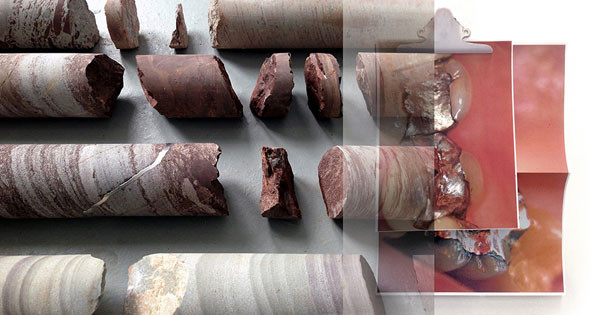CARLOS IRIJALBA - Amalgam
19 Apr - 21 May 2014

Carlos Irijalba is currently a resident at the Rijksakademie van Beeldende kunsten in Amsterdam (2013/2014). He graduated at the Basque Country University and UDK Berlin in 2004. He was awarded with the Guggenheim Bilbao Photography Grant in 2003 and the Marcelino Botín Art Grant in 2007/08. He also received the Purificacion Garcia Photography First Prize and the Revelation PhotoEspaña Prize among others. Irijalba has exhibited in galleries, art institutions and museums worldwide, including CCCB Barcelona, Herzliya Museum Israel or The Yokohama Art Center and LMCC New York.
Amalgam is a combination or mixture of diverse elements, which will create something different. Spanish artist Carlos Irijalba (Pamplona, 1979) is interested in the alchemistic qualities of amalgam and its opaque function and history on different territories. In his work he investigates the physical properties of a given terrain and uses the outcome as material in his practice. Amalgam as a modifiable substance is used in dentistry for dental fillings, as a substance for healing. Asphalt in landscape is an amalgam used for roads to cover up the natural layers of soil. This opaque mass seals the accumulative memory present in the soil, which transforms the substance in a material to forget. A way of extracting memory is by drilling the layers of soil as a timeline. In the exhibition this drilling is presented in the insertion of bismuth alloy. This grayish-white metallic element shares a specific characteristic with water that in solid state (when it turns into ice) floats on its liquid state.
The different appearances of matter are of interest to Irijalba. In the sense of how history is visible in matter and how you perceive it. Mexican-American writer, artist and philosopher Manuel DeLanda stated in New Materialism: Interviews & Cartographies (2012); ‘All objective entities (substances) are products of a historical process, that is, their identity is synthesized or produced as part of cosmological, geological, biological, or social history’i>. In the exhibition the pieces of asphalt are perceived as a layer of human intervention of geological history. The traces of Bismuth intervene in the soil tubes like the dental fillings in teeth. The sheets of photographs of the teeth in the show are recurring in the metal foam A4’s. Metal foam is a material used for aircrafts and now presented as a paper format on which information is often transmitted. In the exhibition the ‘Amalgam’ works are responding to the study of matter and meaning. Accumulations, crystallizations and eruptions do not exclusively happen in certain behaviours of visible matter, but also occur in genetics, language or social dynamics. In the words of Irijalba: ‘Amalgam as an opaque capacity function as a substance to forget. Amalgam is to override, to overwrite. To disallow the past with a substance, as opaque in appearance as transparent in it's lack of structure.’
curated by Julia Geerlings
The different appearances of matter are of interest to Irijalba. In the sense of how history is visible in matter and how you perceive it. Mexican-American writer, artist and philosopher Manuel DeLanda stated in New Materialism: Interviews & Cartographies (2012); ‘All objective entities (substances) are products of a historical process, that is, their identity is synthesized or produced as part of cosmological, geological, biological, or social history’i>. In the exhibition the pieces of asphalt are perceived as a layer of human intervention of geological history. The traces of Bismuth intervene in the soil tubes like the dental fillings in teeth. The sheets of photographs of the teeth in the show are recurring in the metal foam A4’s. Metal foam is a material used for aircrafts and now presented as a paper format on which information is often transmitted. In the exhibition the ‘Amalgam’ works are responding to the study of matter and meaning. Accumulations, crystallizations and eruptions do not exclusively happen in certain behaviours of visible matter, but also occur in genetics, language or social dynamics. In the words of Irijalba: ‘Amalgam as an opaque capacity function as a substance to forget. Amalgam is to override, to overwrite. To disallow the past with a substance, as opaque in appearance as transparent in it's lack of structure.’
curated by Julia Geerlings
